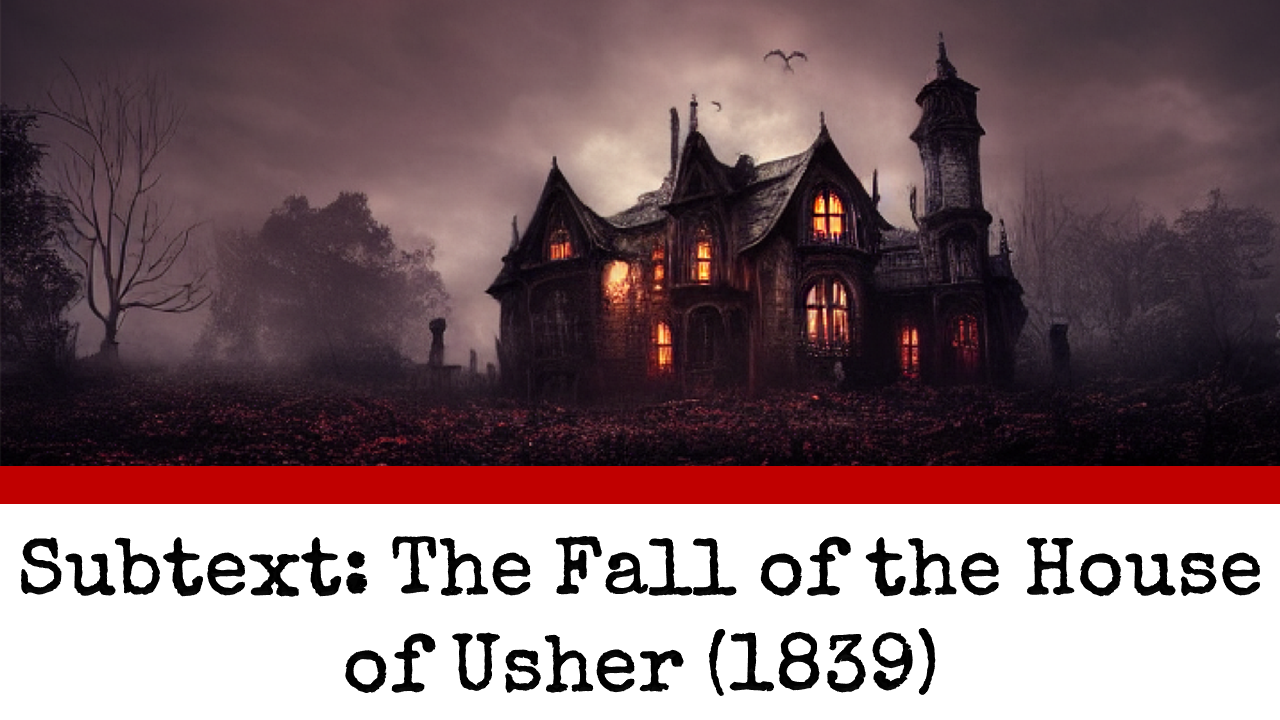My daughters have been throwing themselves into creative writing recently; I couldn’t be prouder, but it has created some interesting conversations about the nuts and bolts of creating a story. One of our latest conversations has been about subtext, in particular how to stretch out the tension of a scene by having the characters communicate everything about their conflict without actually voicing it in dialogue.
This got me thinking about subtext in horror, how body language, the environment or terrified silences can communicate meaning and build tension. This is relatively straightforward to depict in film but can be trickier in texts. There are some great examples of subtext in written horror that we can learn from, but a favourite for me is Edgar Allen Poe’s “The Fall of the House of Usher.” Published in 1839, this story is a Gothic masterpiece, following the narrator as he stays with the mad, sickly Roderick Usher and his dying sister Madeline. I’ll avoid spoiling the story, but the main themes are the isolation and madness from being trapped in the dark, brooding Usher mansion.
There’s very little dialogue in this tale. While modern stories might use intense, moody conversations as a way to explore the narrator’s relationships with Roderick and Madeline, or to trace the highs and lows of the Usher’s history, Poe opts to only sketch out the setup with the bare minimum of spoken words. Instead, the unnamed narrator spends much of story describing the dismal, fetid Usher mansion and the air of hopeless depression that hangs over its inhabitants. This kind of infodump is not favoured in modern storytelling, but Poe gives texture and rhythm to the narrator’s thoughts, peppering each description with personal impressions, observations and questions. The air of quiet desperation is symbolised in every story beat, but what’s important is that the narrator, and the reader, cannot do more than trace the edges of the great dark mystery of the mad brother and his dying sister, seemingly trapped the terrifying house.
As a result, the dark horror of the Usher mansion drips from every paragraph, hinting, suggesting, but never entirely answering the question of what is happening to the siblings. When the story reaches its gory climax, the reader is left disturbed, unsettled – and still craving answers.
Do you have a favourite story that conveys horror without leaning on dialogue? Let me know in the comments below!

Leave a Reply